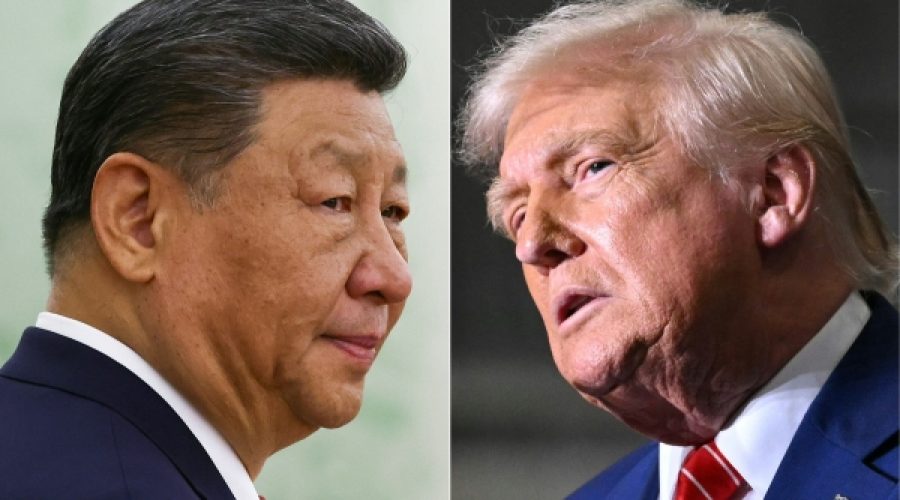Dollar Slips Ahead of Trump-Xi Meeting: What Investors and Businesses Need to Know for Market Impact
SINGAPORE — The U.S. dollar weakened on Tuesday ahead of a series of central bank meetings expected to include a rate cut in the United States, as investors cautiously monitored President Donald Trump’s Asia tour with hopes of securing a trade deal with China.
The Japanese yen strengthened by over 0.6% to 151.855 per U.S. dollar ahead of the Bank of Japan’s upcoming meeting. While the BOJ is anticipated to maintain current interest rates, market attention is focused on any indications regarding the timing of the next rate hike. Support for the yen was bolstered by comments from U.S. Treasury Secretary Scott Bessent, who emphasized the need for “sound monetary policy” during discussions with his Japanese counterpart, Satsuki Katayama. Bessent’s remarks were interpreted as a critique of the BOJ’s cautious pace in raising rates.
Investors also monitored President Trump’s meeting with Japan’s newly appointed Prime Minister Sanae Takaichi in Tokyo. Trump welcomed Takaichi’s commitment to accelerating Japan’s military buildup and signed agreements concerning trade and rare earth minerals.
Hopes for a China Trade Deal Persist
Despite initial signs of easing trade tensions between the United States and China triggering a risk rally on Monday—causing the dollar to fall against other currencies—investors remain cautious, wary that any substantial Sino-U.S. trade deal may fall short of expectations.
The spotlight now shifts to the meeting between Trump and Chinese President Xi Jinping scheduled for Thursday in South Korea. Ahead of arriving in Tokyo, Trump expressed optimism, stating, “I’ve got a lot of respect for President Xi and I think we’re going to come away with a deal.” Meanwhile, Chinese officials have remained reserved regarding the trade talks and have disclosed little about the potential outcomes.
Vasu Menon, Managing Director of Investment Strategy at OCBC, remarked that a “perfect resolution” may not materialize, and some issues could be deferred for future negotiation. He noted, “When you have two economic superpowers with strong-headed leaders trying to work out a deal, one can imagine that it will not be a seamless affair.” Nonetheless, Menon added that any tangible progress between the two leaders could be enough to placate markets and sustain the ongoing bull run.
The combined anticipation surrounding the trade talks and an expected 25-basis-point cut by the Federal Reserve has placed the dollar under pressure. The euro reached a one-week high of $1.1668 on Tuesday, while the British pound climbed 0.25% to $1.3368. The dollar index, which tracks the U.S. currency against six major currencies, declined 0.19% to 98.58 following a 0.15% drop during the previous session.
Federal Reserve Meeting in Focus
With markets already pricing in a Fed rate cut, attention will be on any signs the central bank may begin curbing its quantitative tightening program. Observers are also watching for clarity from Fed Chair Jerome Powell on prospects for further rate cuts amidst the ongoing U.S. government shutdown, which has restricted access to economic data. Traders currently expect another 25-basis-point cut in December.
David Mericle, Chief U.S. Economist at Goldman Sachs, commented, “We do not expect formal guidance about the December meeting, but if Chair Powell is asked, he will likely be comfortable referencing the September dots, which imply a third cut in December.” The Fed reduced rates by 25 basis points last month.
Meanwhile, in Europe, the European Central Bank is nearly certain to maintain rates at Thursday’s meeting, as market participants remain divided on whether the ECB will resume easing next year.
The Australian dollar, often viewed as a barometer of risk appetite, rose 0.11% to a two-week high of $0.6563. The New Zealand dollar also edged higher to $0.5782.
Special Analysis by Omanet | Navigate Oman’s Market
The evolving dynamics of global currency markets, alongside anticipated U.S. Federal Reserve rate cuts and ongoing Sino-U.S. trade negotiations, present both risks and opportunities for Oman’s businesses. Weaker dollar trends and potential trade deal progress could enhance export competitiveness and attract foreign investment, but uncertainty remains high, warranting cautious strategic planning. Smart investors and entrepreneurs should monitor global monetary policies and geopolitical developments closely to position themselves advantageously in a volatile market environment.



